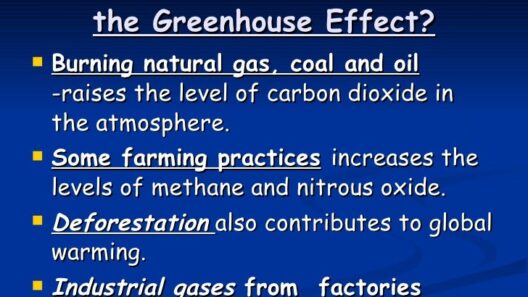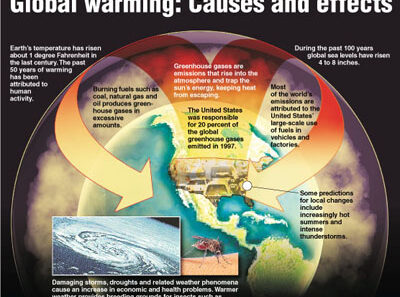Acid rain, an environmental phenomenon characterized by the deposition of acidic components (such as sulfuric and nitric acids) from the atmosphere, has long been a source of contention among environmentalists and the general public alike. The acidification of rainwater results primarily from industrial emissions, vehicular discharge, and other pollutants. A prevailing myth has emerged suggesting that acid rain could play a role in mitigating the effects of global warming. This assertion oversimplifies complex atmospheric interactions and misrepresents the real implications of acid rain. In this discourse, we will embark on a detailed examination that dispels this myth, elucidating the multifaceted dynamics of climate change and the detrimental effects of acid rain.
To fully grasp why acid rain does not facilitate a slowdown in global warming, it is crucial to understand the mechanisms driving climate change. Anthropogenic activities, particularly the burning of fossil fuels, release an excess of greenhouse gases (GHGs), primarily carbon dioxide (CO2), methane (CH4), and nitrous oxide (N2O). These gases trap heat in the earth’s atmosphere, leading to a gradual increase in global temperatures—a phenomenon known as the greenhouse effect. While it is true that acid rain is linked to the emissions of some of these gases, it is a symptom of pollution, not a remedy for climate change.
One must also consider a pivotal component of this discussion: the environmental impact of acid rain itself. Acid rain can severely affect water bodies, soil chemistry, and biodiversity. When acidified rainwater infiltrates lakes and streams, it can lead to the leaching of metals such as aluminum into the water. This poses a significant risk to aquatic life by disrupting ecosystems and diminishing biodiversity. Additionally, soil pH levels can be adversely affected, inhibiting plant growth and contributing to forest dieback. These changes not only threaten ecosystems but also undermine the very resilience of the environment needed to combat climate change efficiently.
Moreover, the notion that acid rain could somehow reduce greenhouse gas concentrations is fundamentally flawed. Contrary to this belief, the reactions that create acid rain typically occur in a parallel manner to the processes that elevate greenhouse gas levels. The pollutants responsible for acid rain—sulfur dioxide (SO2) and nitrogen oxides (NOx)—are emitted from similar industrial processes that also release significant amounts of CO2. Thus, addressing acid rain without tackling the broader spectrum of atmospheric pollutants fails to address the root cause of global warming.
Furthermore, scientists and environmental experts have conducted extensive research examining the relationship between acid rain and climate change. Correlational studies indicate that regions severely impacted by acid rain tend to exhibit increased levels of greenhouse gas emissions, not decreased levels. In fact, the strategies deployed to counteract acid rain, such as installing scrubbers in smokestacks or transitioning to cleaner fuels, do not inherently yield a reduction in CO2 emissions unless specifically designed to target carbon output. This further solidifies the argument that acid rain is, at best, an environmental challenge to be managed rather than a potential ally in the fight against global warming.
It is also vital to debunk the myth surrounding acid rain’s purported cooling effect. Some proponents of this theory suggest that the particles from acid precipitation could reflect sunlight, thereby producing a cooling effect in certain areas. However, this is a misleading oversimplification of a complex issue. While particulate matter can influence local weather patterns, the overarching impact of acid rain comprises detrimental consequences for climate regulation. The local cooling effect posited fails to account for the widespread and irrevocable damage inflicted upon ecosystems and public health.
The discourse on acid rain and global warming must also address policy and societal implications. Emphasizing acid rain as a potential solution cultivates complacency among stakeholders and dilutes the urgency needed to confront climate change. Transformative action—such as the global transition to renewable energy, enhanced carbon capture technologies, and reforestation efforts—holds far greater promise for reducing greenhouse gas emissions and combating climate-induced threats. These pathways demand collective action and commitment from multiple sectors, necessitating collaboration between governments, industries, and civil society.
In summation, the assertion that acid rain can counteract global warming is a myth rooted in misunderstandings of both climate dynamics and the ecological ramifications of acidic precipitation. The multifarious adverse effects of acid rain could exacerbate, rather than ameliorate, the complications associated with climate change. Instead of clinging to misperceptions, it is imperative to foster informed discussions that drive meaningful actions toward a sustainable future. By comprehensively understanding these complex interrelationships, society can proactively engage in combating climate change and fostering a more resilient planet for future generations.








